| |
We attended an event for the local Okinawan joint on Saturday evening. As we were leaving, the owner's sister gave us a dragonfruit that she had grown and brought from Okinawa. 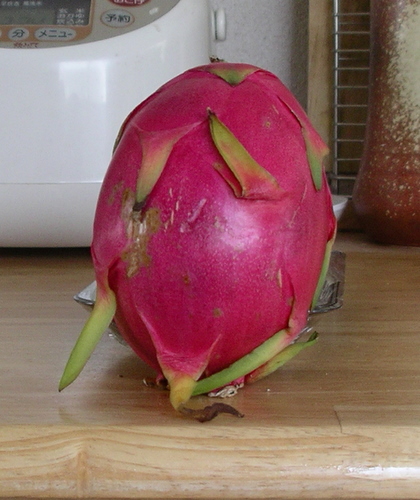 Dragonfruit tastes rather like kiwi, but less tart. They're as pretty on the inside as they are outside. Some are all pink with black seeds; others, like ours, have a thin layer of pink between the skin and white pulp with black seeds 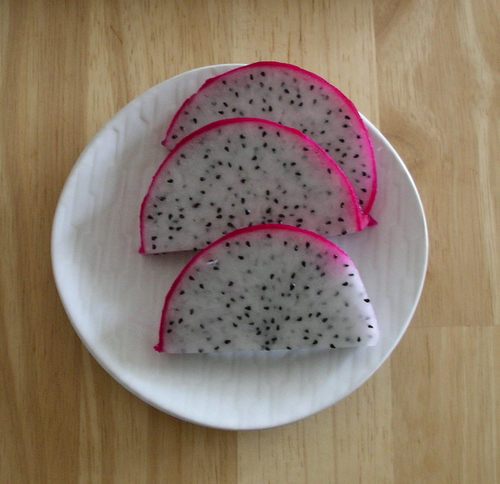
Gratuitous Autumn Food Photo, 2008 Edition
If I had to leave Japan knowing about only one new food, it would be takikomi gohan. 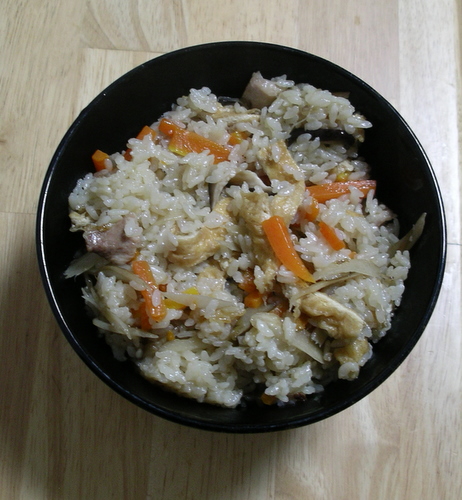 Takikomi gohan Takikomi gohan is rice cooked along with other stuff in water seasoned with soy sauce and other flavorings. It's also called gomoku gohan, five-ingredient rice, presumably because most recipes have five ingredients. This recipe calls for chicken, carrot, shiitake mushrooms, aburaage, and gobou (burdock root). It's one of our favorite fall dinners, alongside some homemade rice-bran pickles.
Wednesday, October 8, 2008, 10:32 PM General, FoodPosted by matthew Why have we posted so many sea photos this week? It's because we took a trip to Miyako, on the Pacific coast of Iwate. Matthew had a model railroad event there, so we took the opportunity to explore part of Iwate we hadn't visited and enjoy some fresh seafood. Miyako is most famous for its spectacular rock formations, especially those at Jodogahama.   There's a protected rocky beach at Jodogahama, where old women spread out konbu seaweed to dry.  We were there pretty early in the morning, which turned out to be a good thing. We got to see the nearly empty beach, but less than an hour later it was overrun with tourists. 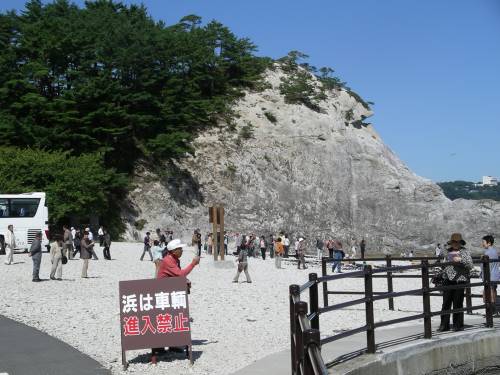 Of course, no visit to the sea is complete without fresh seafood. We stayed at a minshuku (a kind of traditional "bed and dinner and breakfast" lodge) owned by a fisherman. Naturally, the morning's catch was the evening's dinner. 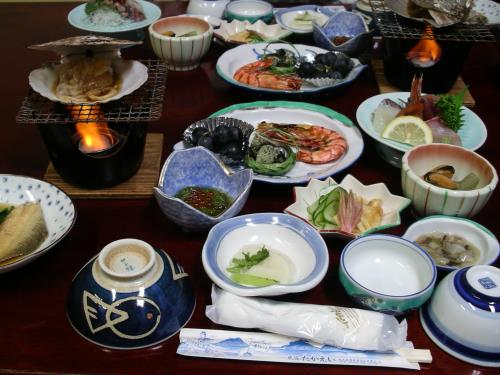
This is definitely not the kind of pepperoncini I ran around town looking for back in May: 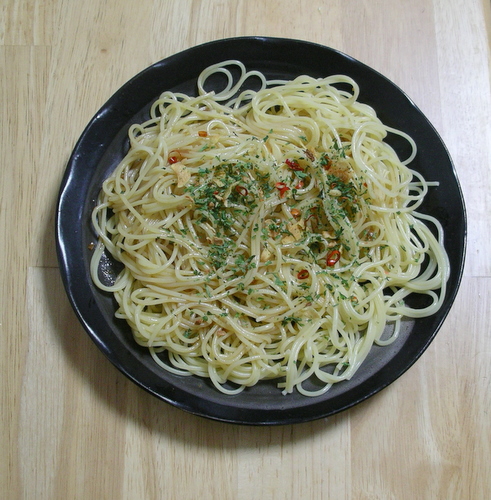 As it turns out, this kind of pasta is actually called peperoncino. This batch is from a mix, consisting of a liquid sauce packet (olive oil, garlic oil, soy sauce, and some other stuff) and a separate toppings packet (toasted garlic, parsley, and sliced dried togarashi). It's quite delicious.
A friend gave me a bag of satoimo today. 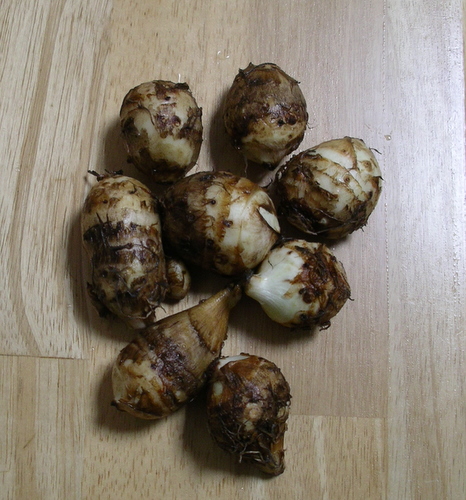 Satoimo Satoimo are probably better known in America as taro root, the basis of the Hawaiian food poi. Here, they're most often boiled, peeled, and served in miso soup. I have a new Japanese-language cookbook that rather conveniently has a bunch of satoimo recipes in it, so I made one of them tonight. 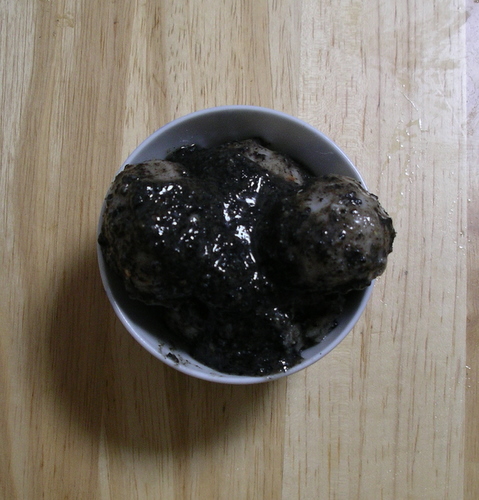 This is satoimo no kurogoma miso ae, taro with black sesame and miso dressing. It was quite tasty ― the satoimo themselves have a mild flavor that went nicely with the stronger black sesame. And a Manhattan.
A friend gave us a couple of goya this weekend, one green and one white. 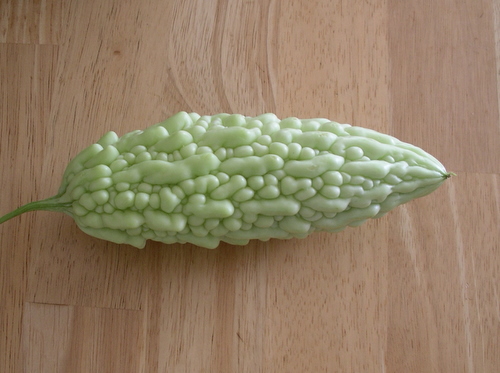 Goya Goya, or bitter melon, is a staple of Okinawan cuisine. It's very bitter but refreshing, and tastes of quinine and grass. Its juice is refreshing when mixed with shochu and soda in goya sours, and its flesh can often be found in chanpuru, Okinawan stir-fries. I made goya chanpuru for lunch today. Besides goya, the chanpuru involved eggs, tofu, thinly sliced pork, ginger, and bean sprouts. 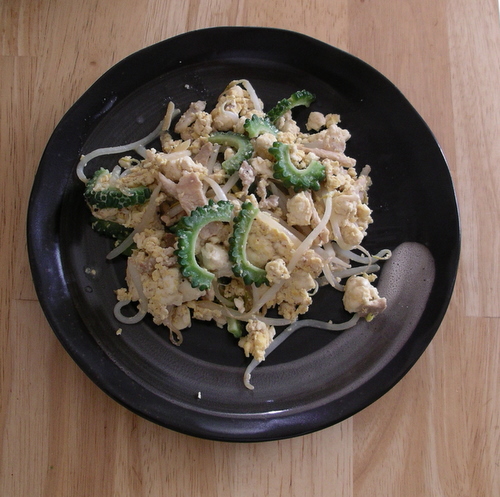
One of the loudspeaker trucks was circulating this morning. Its announcement was different from the others because it had traditional-sounding music playing in the background ― similar to the ramen truck, but peaceful rather than creepy. It turned out to be a guy selling watermelons from the back of a covered truck. Naturally, we had to take advantage of this totally Japanese experience and buy one.  Totally worth the 900 yen.
After a little over a year on the Japanese cooking scene, I've gotten quite an education. I'm a bit of a purist, so I've been focusing on using seasonal ingredients and learning traditional techniques. As a general rule, I prefer to avoid processed things ― for example, I won't use okonomiyaki mix because while making it from scratch is a little more involved and itchy (stupid nagaimo juice), it's still really easy and the payoff is good. I don't mind fiddly, time-consuming, involved things if the end result is worth it. Which is why my first experience with making chirashi-zushi was such a downer. Chirashi-zushi is essentially vinegared rice with seasoned things mixed in and other things scattered on top. Making it from scratch took the better part of an evening: cooking and seasoning each of the ingredients individually, vinegaring the rice and fanning it while stirring, and finally mixing and topping it with the other ingredients. It looked pretty, but it was really underwhelming. Some of the ingredients were undercooked and strongly seasoned, while others were overcooked and strongly seasoned, almost to the point of being candied. The latter point, though, provided a valuable lesson: if you're cooking a mixture involving soy sauce and mirin and it starts to smell like battery acid, it's too far gone. I shared my sad story of battery-acid-smelling disappointment with a friend. She laughed, then shared her secret. "I'm too busy to make it from scratch," she said. "I use a mix." A mix?! Horrors! What about tradition, the need to use fresh ingredients, the attention to detail so commonly associated with Japanese cooking? Well, you can get freshness when you choose your toppings; as it turns out, a bag of vinegared vegetables and a pouch of shredded nori seaweed and sesame seeds comprise the mix. The result? 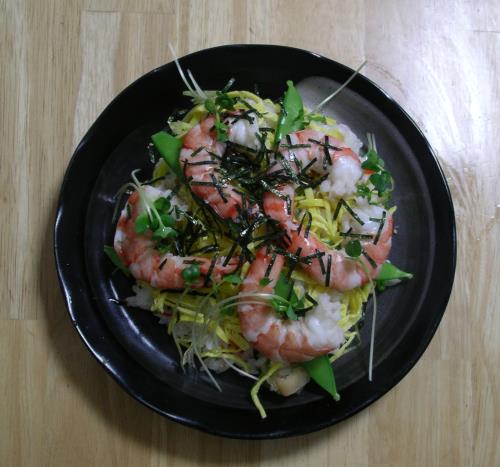 Mix chirashi was vastly superior to my scratch version. And if it's good enough for the natives, it's good enough for me.
A couple of months ago, we went on a mountain vegetable-picking trip with some of our local friends. Because we had no prior experience cooking almost everything we picked, we solicited cooking tips as well. For one plant, koshiabura, a friend recommended tossing it with cooked spaghetti and pepperoncini. Japanese cooking borrows a lot from other cuisines, so I didn't think the suggestion to combine a humble mountain plant with imported Italian peppers was too offbeat. I certainly didn't think to ask whether she meant something entirely different.
Before dinner, I headed off to the store for ingredients. Regular grocery store: no pepperoncini. Booze and imported goods store: no pepperoncini. Posh department store: no pepperoncini. I was running out of time, so I made a lateral flavor jump to capers instead. The spaghetti was good, but I wondered how different it would be with the pepperoncini. It was only much later that I started wondering whether our friend had meant pickled peppers at all.
So I asked recently. "When you said 'pepperoncini,' what did you mean?" "Garlic and togarashi (Japanese red pepper). Why?" I explained the futile hunt for small yellow pickled peppers, and we both got a big laugh out of it. But next time, I'm asking what she means if she says something Western.
[ 2 comments ] permalink
During dinner at the local Okinawan joint, we ordered a new-to-us dish that came with a mystery seafood topping. We asked about it, and got an answer we didn't understand: shi-chikin. While the owner's son disappeared into the back, we consulted the electronic dictionary, but couldn't find anything under a listing for shi-chikin. It all became clear when he brought out a small can and pointed to the mermaid on the side. Sea chicken. Chicken of the Sea. Canned tuna. Canned tuna has an odd place in Japanese cooking. We find it where we'd expect to: in sandwiches and salads. We also find it where we wouldn't expect to: on pizza, in those prepackaged, unrefrigerated sandwiches with the edges pressed together and the crusts cut off, in onigiri (rice balls). It reaches the pinnacle of awesomeness in onigiri. There's no better convenience snack than a tuna-mayo onigiri ― the creamy, salty tuna, the sticky, slightly sweet rice, and the crisp, ocean-y nori are perfect together. Additionally, tuna keeps company with an unlikely sidekick: yellow corn (corn in Japanese cooking is another subject entirely). They're a surprisingly tasty duo ― corn and tuna pizza is far from the worst thing I've ever eaten. Salads now seem to lack something if they come with one or the other, but not both. Which raises a question: does the normalization of the tuna/corn partnership mean we've been here too long? It's likely that question will only linger until the next discovery of canned tuna in a completely unexpected place.
Back Next
|
|








 Calendar
Calendar




